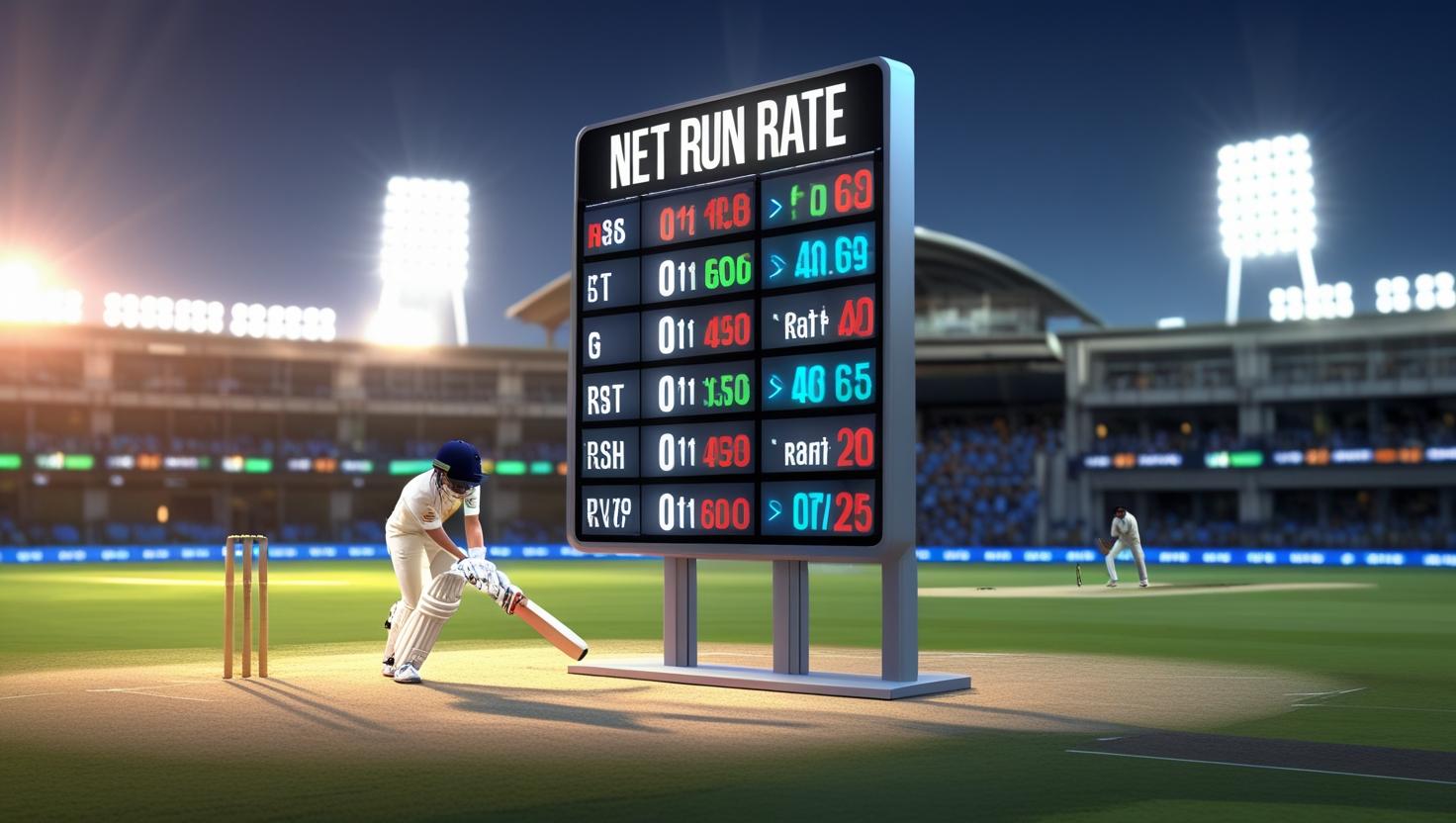In cricket tournaments, especially when the race to the playoffs gets tight, one term that often grabs attention is Net Run Rate (NRR). It plays a crucial role in determining team rankings when teams are clashing so closely. But what is Net Run Rate, and how is it calculated? In this article, we will explain the concept of NRR, how it influences team standings, and how you can calculate NRR using a Net Run Rate calculator.
What is Net Run Rate in Cricket?
Net Run Rate (NRR) is a performance metric used in cricket tournaments. It is calculated as the difference between the average runs a team scores per over and the average runs it concedes per over across all matches. A positive NRR indicates dominance, while a negative NRR suggests a team has struggled.

NRR is a primary decision-maker and a crucial metric to evaluate where a particular team stands compared to its competitors. In simple words, a net run rate calculator is used to calculate the value of NRR. It reflects the overall performance of a team throughout a tournament.
As tournaments often see multiple teams with similar win-loss records, maintaining a healthy net run rate can be the deciding factor in qualification scenarios, especially in league formats like the IPL, World Cup, or other T20 leagues.
How to Calculate Run Rate
The run rate is calculated using the NRR formula as follows –

- Total Runs Scored: This is the sum of all runs a team has scored across its matches in the tournament.
- Total Overs Faced: This is the total number of overs the team has batted across all matches. If a team is bowled out before completing their full quota of overs, only the actual overs faced are counted.
- Total Runs Conceded: This is the total number of runs given away (conceded) by the team while bowling in all matches.
- Total Overs Bowled: This is the total number of overs the team has bowled across all matches. Like with overs faced, only the actual overs bowled count.
However, instead of calculating the NRR manually, which is often complex and time-consuming, it is recommended to use an online NRR calculator or net run rate calculator.
Example of Net Run Rate Calculation
Let’s take an example of the recently concluded IPL 2025:
Match: Sunrisers Hyderabad vs Opponent (March 27, 2025)
- Sunrisers Hyderabad (SRH) batted first and scored 277/3 in 20 overs
- Mumbai Indians (MI) scored 246/5 in 20 overs
- Result: Sunrisers Hyderabad won
NRR Calculation:
SRH run rate = 277 ÷ 20 = 13.85
MI run rate = 246 ÷ 20 = 12.30
Match NRR for SRH = 13.85 – 12.30 = +1.55
Match NRR for MI = 12.30 – 13.85 = –1.55
Sunrisers Hyderabad had a strong win, scoring faster than they conceded. This gave them a positive NRR of +1.55, which improved their position on the points table.
How to Use Net Run Rate Calculator
A Net Run Rate calculator helps you quickly find the NRR of a team by entering basic match details like runs scored, overs faced, runs conceded, and overs bowled.
Steps to Use It:
- Enter Total Runs Scored: Add up all the runs your team has made across matches.
- Enter Total Overs Faced: Count the total overs your team has batted.
- Enter Total Runs Conceded: Sum up all the runs given to opponents while bowling.
- Enter Total Overs Bowled: Total overs your team has bowled in the tournament.
- Click Calculate: The tool will show your team’s Net Run Rate instantly.
Special Cases When Calculating NRR
Ever thought what happens to Net Run Rate when a match is abandoned due to rain, tied, played in a super over, or reduced overs? The NRR is still evaluated; however, the measurement might be varied as follows –
1. All-Out Before Full Quota
If a team is bowled out before facing all their overs, the full quota of overs (e.g., 20 in T20 or 50 in ODIs) is still used in NRR calculation.
Example: Team A scores 120 in 17 overs (all out in a 20-over match). NRR calculation will still use 20 overs, not 17.
2. Rain-Affected Matches (DLS Method)
In rain-shortened matches using the Duckworth–Lewis–Stern (DLS) method, NRR is calculated using the actual overs played. The adjusted target and overs (as per DLS) are used instead of the full 20 or 50.
3. No Result Matches
Matches with no result (e.g., abandoned due to rain) are not counted in NRR calculations. Neither is it calculated for runs scored nor overs faced/bowled.
- Super Over Outcomes
Super Overs are not included in NRR calculations. Only the regular match overs and runs are considered.
5. Tied Matches (No Super Over)
If the match ends in a tie and no Super Over is played, both teams get the same run rate for NRR.
6. Team Chased the Target Early
If a team wins before using all their overs, only the actual overs faced are considered in the NRR.
Example: If Team B chases 150 in just 15 overs, their run rate is 150 ÷ 15 = 10 (not 150 ÷ 20).
Conclusion
Net Run Rate may seem like just a number, but in close tournaments, it often becomes the crucial match decider between playoff qualification and early exit. Whether you are a team analyst, a die-hard fan, or just following the table closely, understanding how NRR works can give you deeper insight into a team’s standing and strategy.
So, the next time you check the points table, don’t just look at the wins—keep an eye on that decimal too; it might be the difference between victory and heartbreak.

